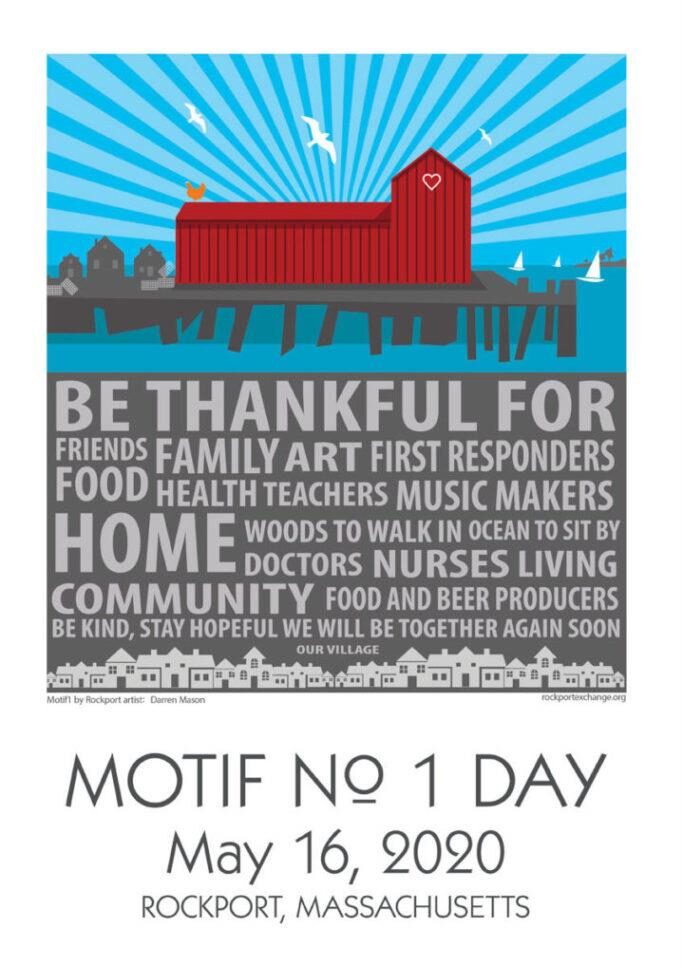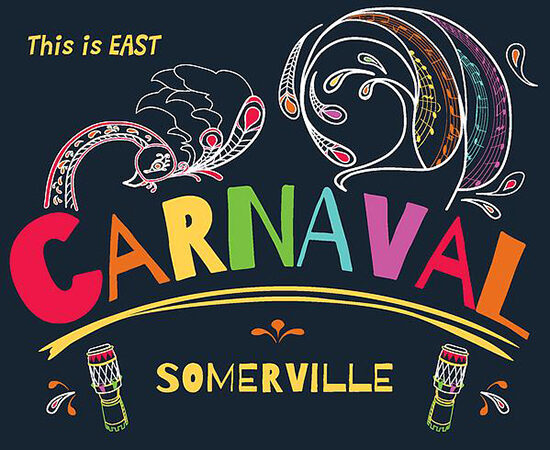Festivals Toolkit

To Go Virtual or Not?
In June 2020, the Festivals Audience Lab had a session on how to adjust given the impact of COVID-19, featuring three festivals who had already made shifts in their events after Massachusetts ordered the shut down of large public gatherings. The interviews with each of these panelists is summarized here as a series of case studies. You can view the full session with Q&A online.
The three panelists featured were:
- Sarah Kelly, community volunteer and co-founder of Rockport Exchange (Motif No. 1 Day Festival)
- Patrice Maye, Executive Director, South Shore Art Center (South Shore Arts Festival)
- Jen Atwood, Executive Director, East Somerville Main Streets (Carnaval @ Somerstreets)
Case Study: Motif No. 1 Day Festival
Presented by Sarah Kelly, community volunteer and co-founder of Rockport Exchange
Festival Description
The festival celebrates an iconic fishing shack, which is the symbol of the town of Rockport and claimed to be the most photographed and painted building in the world. The festival intends to honor the fishing shack’s history and place as a source of local pride. This festival has been around for 50 years and was originally designed to kick off the tourist season in Rockport. About 10 years ago Rockport Exchange, a local nonprofit organization, took it over to try to revitalize it and have worked to really have local buy-in as well as make it an event that attracts visitors.

Decision: Move to Virtual
Since one purpose of the festival is to attract tourists, it wasn’t obvious that we should move to virtual. You are not generating the same economic impact as attracting people physically into the town. But, we realized that since we are a tourist destination that means there are a lot of people who care about this place who are not residents and who can’t come and visit. Moving to virtual also allowed locals to a way to celebrate during this difficult time. We decided to move forward with a virtual event that provided both a celebratory opportunity and ways to encourage support of local businesses.
Programming Shifts
The festival has poetry, dance, music, food, visual art, historical presentations. Some of these translated better into an online forum then others.
The Inns of Rockport, a coalition of area inns, put together a cookbook and made curbside sales available. We asked people to cook selected recipes from the cookbook to celebrate local food. We invited poetry submissions and held a poetry reading. We also invited visual art submissions depicting the motif. A local art teacher asked their students to participate and we got a lot of great submissions that way. We also had a lot of multimedia depictions of the motif from professional artists, including a cookie version. We shared historical films on YouTube and on our website.
We extended the festival to be a week long, with the final day the original date of the festival, May 16. Leading up to the date we encouraged submissions and shared on social media.
On the day itself we had a few timed, interactive elements. The first was a poster reveal; every year a different artist is commissioned to create a commemorative poster, we released it the same as we do every year. We also had a short film premier and a poetry reading. At the end of the day we invited everyone to “raise a glass to Rockport” which included our social media person doing a live Facebook event in front of the motif.
While we were able to find ways to shift many aspects of the festival online, we found it difficult to recreate the dance and music elements. We also didn’t have any vendors, so there was a huge economic aspect missing from the event.
Benefits to Virtual
We are a small organization in a small town and we don’t have the resources to do a multi-day festival. Shifting to virtual allowed us to extend the celebration from one day to a week. We also have the infrastructure to support a virtual event (website, social media, etc.), so even though it takes work to shift the programming it’s possible to do without overburdening yourself. It’s also not the incredible, intense output that a physical festival brings.
Case Study: South Shore Arts Festival
Presented by Patrice Maye, Executive Director, South Shore Art Center
Festival Description
The South Shore Arts Festival is a three day “art immersion” with visual arts, performing arts, and kids maker activities. It was begun 65 years ago by two local plein air artists who would display their work for local residents to come through and look at. The event has grown to host 14,000 visitors, 100 juried craft exhibitors, 50 performing artists, and 25 hospitality partners each year. The festival created such a demand for art that a community art center was created, which is the South Shore Art Center.

Decision: Move to Virtual
Not having an in-person festival is devastating both economically and emotionally. This would have been our 65th anniversary. The South Shore Arts Center’s annual fundraising gala is the festival’s kickoff event and represents one quarter of the organization’s income. It has also impacted the hundreds of artists and artisans who rely on that weekend’s worth of sales for income. We wanted to still honor the festival and give artists a platform to showcase and sell their art, so we decided to hold our first and hopefully only online festival.
Programming Shifts
The festival is historically Father’s Day weekend, we postponed the online event to be a week later. We needed the additional time to reconfigure activities. Our decisions about how to recreate aspects of the festival were based on some recent experiences with virtual and also what we felt was important to honoring the event.
We wanted to honor artists and have a platform for showcasing and selling art. We revised our jury process and opened up the opportunity to all of our members, so more artists will be featured in the online festival. We have a website with artwork posted and the ability to purchase online. We have a separate page just for our craft exhibitors, including links to their websites.
This content is all static, so we need a way to drive people to our site. We’ve scheduled a day’s worth of pop up art events that will be a mix of Facebook Live, Zoom, and distanced in person. A kid’s event will be on Zoom, where they can make art using materials they have on hand at home. We’ll have a Zoom event for our artists, where they can meet the festival jurors and do a Q and A with them. We’ll have a few studio tours. Some artists will outside doing plein air painting and I’ll be interviewing them (with a mask on). In the evening we’ll have a band perform in the courtyard. These last two events will be broadcast on Facebook Live, but it’s also possible for some people to experience them in person because they are outside and people can be far apart.
We tested Facebook Live a few weeks ago with a gallery show. The works were online and were also for sale. We had a large audience that participated live and also watched the video afterwards, we were encouraged by that. We have a pretty big following on Facebook and we’ll cross post to Instagram, so we’ll see what happens with these events.
Disadvantages to Virtual
It was a lot of work for us to move to virtual. We had revise our art submission process. We also had to create a platform for art sales including setting up sales tax, which was a bit of a nightmare. The organization is not going to be getting the kind of income it typically generates from this event. Since there’s not fundraising gala, we’ve lost a quarter of our income. The only possible income will be from sales of artwork.
Case Study: Carnaval @ Somerstreets
Presented by Jen Atwood, Executive Director, East Somerville Main Streets
Festival Description
This festival is put on by East Somerville Main Streets, an economic and community development organization that serves the poorest and most diverse neighborhood in the city of Somerville. East Somerville has a large immigrant population, the three largest groups are from El Salvador, Brazil, and Haiti. The goal of the festival is to highlight and celebrate our residents from El Salvador and Brazil and also to support our local business community by increasing foot traffic. We have three stages of live music and also some other performers such as a local circus group. We’ve held this one-day event for the past ten years, about 6,000 people attend.

Decision: No Virtual Event
We didn’t feel that a virtual event would fulfill our mission of supporting specifically the communities and local businesses here in East Somerville. Before we decided to cancel we had done a few virtual events to test the viability and they were very poorly attended. There is limited internet capacity and computer savviness to participate in this type of programming. Before we decided to cancel we consulted with the artists we had planned to hire for the festival. Everyone preferred to be hired to do a different program, rather than participating in a virtual Carnaval.
Programming Shifts
Canceling the festival provided us the opportunity to brainstorm new programs that would better serve our mission. We opened a safe pickup market, which has been happening every Sunday since May. Our festival sponsors agreed to shift their support and sponsor this market. We also held a blood drive and raised funds for personal protective equipment to go to local businesses. Our “porch portrait” program began with our board chair, who offered to take portraits of residents on their porches as a way to keep busy and feel less isolated in the time of COVID. This became so popular that we have brought on several photographers and have instituted a process for handling requests.
We have also been able to spend more time supporting local businesses individually. We’ve made connections with financial and legal aid, supported reopening applications to the city, and generally been working to ensure that our business district will be able to come back after everything that has happened.
More Examples of Virtual Festivals/Events
Mass Cultural Council’s Community staff hosted a conversation on how creatives are using arts and culture to re-imagine public spaces and programming as the state moves towards re-opening:
See also Mass Cultural Council’s blog post on Supporting Festivals in the Era of Social Distancing.


